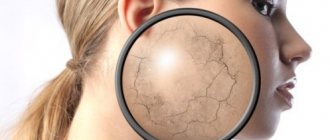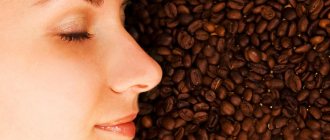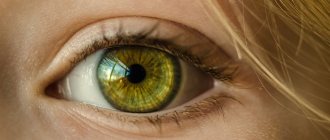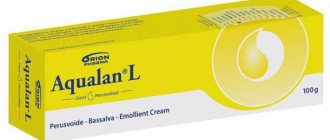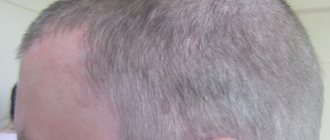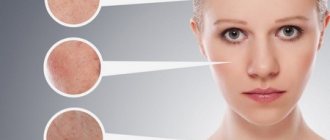Runny nose, itching, hives, swelling, headache and conjunctivitis are not all the symptoms that are observed during allergies. The cause of an allergic reaction can be food, pollen, dust, mold, or animal dander. Allergy symptoms can be caused by various substances, even simple water.
In different countries, the frequency and manifestation of the disease vary dramatically due to the peculiarities of the climatic conditions of the region, the environment, traditions and habits of local residents. The disease can appear at any age, and anything can trigger its appearance.
Allergy
29.06.2012,
A state of increased sensitivity to various allergens, which is caused by an inappropriately strong reaction of the immune system, is called allergy, from Latin - another action.
There are two main manifestations of allergies: immediate and delayed allergic processes (four types).
First type: immediate type hypersensitivity, which manifests itself immediately (10 - 30 minutes) or later (from two hours to two days). For example, hay fever, bronchial asthma, atopic dermatitis, urticaria, Quincke's edema or anaphylactic shock.
The second type is cytotoxic. This includes hemolytic anemia, thrombocytopenia, myocarditis (some forms).
The third type is immunocomplex, which includes: post-streptococcal glomerulonephritis, systemic lupus erythematosus.
The fourth type is delayed-type hypersensitivity, developing up to two days: contact dermatitis, drug allergies, rheumatoid arthritis and others.
An allergy is an unusual reaction of the body's immune system to something that normally does not cause any reaction, an increased or perverted sensitivity of the body to any allergen. Allergen is a substance that provokes an allergic reaction. An allergic reaction occurs if a person comes into contact with an allergen to which he has already developed hypersensitivity. Typical allergens are household dust, mold, pollen, grass, food, animal dander, and insect venom. The likelihood of acquiring an allergy increases if there are known cases of allergic reactions in family members, because sensitivity is genetically determined. Although the tendency to allergies is inherited, everyone can have their own allergen. For example, a mother and father may have a pollen allergy that causes them symptoms of hay fever, and their child may have a pet allergy that causes hives (rash).
The reaction to an allergen can occur in the form of immediate or delayed hypersensitivity. Allergies underlie the so-called allergic diseases (for example, bronchial asthma, urticaria, dermatitis).
Allergies can occur at any time. It is possible to suddenly develop allergies to substances that have never caused such a reaction before.
Many children outgrow childhood allergies, and for some, allergy symptoms change over time. For example, a child who suffered from allergic asthma may disappear, but instead develop symptoms of hay fever.
Prepare for the season
Photo: depositphotos/IgorVetushko
Allergies can be prevented, the doctor said. She explained that allergen-specific immunotherapy will help with this: the patient is given the desired allergen in microdoses before the start of the flowering season.
“They exist in several forms: injectable or sublingual, when drops are dripped under the tongue. And the treatment of this seasonal allergy and preparation for it begin in the winter, so that in the spring the patient does not react to these allergens as much,” said Mukhina.
The second type of treatment is symptomatic. With it, patients, approximately two weeks before the start of flowering of causally significant plants, begin to use antihistamines and nasal sprays to prepare the mucous membrane for possible reactions.
Allergy symptoms.
Itching, urticaria (rash), eczema, rhinitis (inflammation of the nasal mucosa), increased lacrimation, tumors of certain tissues, as well as allergic asthma. Sometimes gastrointestinal reactions occur: vomiting, abdominal cramps, acute diarrhea (diarrhea). Allergy symptoms appear in various organs of the human body in various forms: recurrent headaches, migraines, dizziness, nervousness, depression, neuralgia, conjunctivitis, eczema, hay fever, rhinitis, diarrhea, vomiting, asthma, difficulty breathing, swelling of the face and eyelids. The same allergens can cause different symptoms in different people and at different times.
Arrives on schedule
Photo: depositphotos/serezniy
Seasonal allergies usually occur to pollen or fungal spores. According to Mukhina, doctors distinguish three main seasons: from March to May, when the trees bloom; June and July – cereal grasses; September – weeds.
“If we talk about fungal allergies, then sporulation occurs in early spring, when the first snow melts, and during the period of leaf decay - in wet and cool autumn,” the doctor explained.
However, according to statistics, pollen allergy is the most common among others: it is detected in 30–75% of patients. Moreover, according to Mukhina, such people are often sensitive to several allergens at once.
Houseplants and allergies
Some plants (geranium, primrose, calendula) can cause allergic reactions, manifested by acute runny nose (rhinitis), photophobia, deterioration of health, headache, skin rashes, and in more severe cases - attacks of asthmatic bronchitis and bronchial asthma. Such plants must be removed from the apartment.
Touching oleander sometimes causes painful skin burns. Try not to touch its leaves and flowers, and if you had to do this, you should immediately wash your hands with soap (oleander juice is poisonous).
Phytophotodermatosis
Such reactions are also known as plant-induced phytophotodermatitis. This is a group of skin reactions that occur by a non-immune mechanism after skin contact with plants containing phototoxic substances and exposure to ultraviolet radiation.
The most common compounds present in plants that cause phytophotodermatitis are furanocoumarins (psolarens, angelicins). They are present among others in the celery family (Apiaceae), which includes, for example, fennel, parsley, celery, lovage, Sosnowski's hogweed. And also in the Rutaceae family, which includes citrus fruits, rue and bergamot.
These reactions often occur in people who sunbathe in meadows, mow grass, and in children playing in the garden. The typical clinical picture is blisters on an erythematous substrate, well demarcated, affecting exposed skin areas (face, upper and lower extremities), with characteristic hyperpigmentation.
Traditional medicine recipes for treating allergies:
- Brew a tablespoon of greater celandine herb with 2 cups of boiling water and leave for 4 hours. Drink 15-20 minutes before meals, 1/4-1/2 cup in the morning and evening.
- If there is an increased reaction to flower dust (late July - early August), it is recommended that when you come home from the street, you should gargle thoroughly with plain water or with the addition of soothing herbal infusions of motherwort and valerian in any concentration. It is also good to take a contrast shower at least 3 times a day.
- For a complete recovery, a person suffering from allergies needs to drink only a fresh decoction of the series instead of tea and coffee for several years (to change the body’s reaction). Brew it in the same way as tea, letting it brew for 20 minutes. The color of the string decoction should be golden; if it is cloudy or green, then the string is unsuitable for use. The decoction of the string cannot be stored; it must be drunk fresh. It is better to collect the string yourself and dry it in a dark place; a series of briquettes gives practically no effect.
- Prepare an infusion of spirea flowers (meadowsweet). Pour 1 tablespoon of raw material into 500 ml of boiling water, leave for about 10-15 minutes. Drink the prepared infusion 1 tablespoon 3-4 times a day. At first, the symptoms of allergies will decrease slightly and only after a few months of treatment may they go away completely.
- Try counteracting allergies with an infusion of calendula flowers. Pour 10 g of flowers into 2 cups of boiling water and leave for 1-2 hours in a loosely sealed container at room temperature. Take the infusion 1 tablespoon 2-3 times a day.
- One of the most powerful treatments for allergies is mumiyo. But you need high quality mumiyo. Dilute it in the following proportion: 1 g mummy per 1 liter of warm water. Please note that a good mummy dissolves without the appearance of sediment. Take the solution once a day, in the morning, with warm milk. Dosage: children 4-7 years old - 70 ml, 8 years old and older - 100 ml. If the allergy is severe, you can drink mumiyo during the day, but reduce the dose by half. The action of mumiyo is usually rapid. Even swelling of the mucous membrane of the throat, which affects children with allergies, disappears in the very first days. The course of treatment should be carried out for at least 20 days, in spring and autumn. If you take 100 ml of solution per day, then 1 g of mumiyo will last for 10 days.
- A mixture of propolis tincture with walnut infusion is used externally for itching in the ears in patients prone to allergies to antibiotics and other medications.
- Extract the juice from fresh celery root. Take 1-2 teaspoons 3 times a day 30 minutes before meals. You can also use an infusion - leave 2 tablespoons of crushed roots in a glass of cold water for 2 hours, strain. Drink 1/3 glass 3 times a day before meals. Juice and infusion of celery root are used for allergic urticaria.
- Take equal amounts of hawthorn and valerian tincture, mix them and add 30 drops to a glass of water. Take this medicine before bed. This is a very good soothing and strengthening remedy for a weakened body.
- Pour 300 ml of boiling water over a teaspoon of fragrant dill fruits and leave for an hour. Take 1/2 cup 3 times a day for allergic dermatitis. You can use fruit powder 1 g 3 times a day with water.
- Pour 2 tablespoons of stinging nettle leaves into 2 cups of boiling water and leave for 2 hours. Take 1/2 cup 4 times a day before meals. For allergic diseases, all parts of the nettle plant are indicated.
- Pour 10 g of peppermint herb into 1/2 cup boiling water and steam for 20-30 minutes. Take a tablespoon 3 times a day.
- Pour 1/2 cup of boiling water over a teaspoon of wormwood and leave for 2-3 hours. Take 1/4 cup 3 times a day 30 minutes before meals. Tincture (pharmaceutical preparation) - 10 drops 3 times a day 30 minutes before meals.
- Pour 20 g of horsetail herb into a glass of boiling water, leave for 20 minutes, strain and take 1/2-3/4 cup 3 times a day after meals.
- To soothe itching caused by allergies, wipe the skin with any alcohol solution (calendula tincture, vodka, etc.) or a solution of baking soda (1.5 teaspoons per glass of water).
- Pour a tablespoon of chamomile flowers into a glass of boiling water and steam for 20-30 minutes. Take a tablespoon 2-4 times a day.
- Grind dandelion root and burdock root in a mortar and mix together. Pour two tablespoons of the powder mixture into 3 glasses of water and leave overnight. In the morning, boil for 10 minutes and leave to steep for 10 minutes. Drink 1/2 glass before meals and at night (5 times a day).
- Pour 3-4 g of dry buds or 6-8 g of dry young leaves of white birch into 1/2 liter of boiling water, boil for 15-20 minutes and leave for 1-2 hours. Take 1/2 cup 3-4 times a day.
- Pour 15-20 g of ephedra two-spikelet herb with 2-3 cups of boiling water. Boil until half the boiling water evaporates, strain, take a tablespoon 2-3 times a day for allergic dermatoses. Externally, a decoction of the herb (boil a tablespoon of the raw material for 5 minutes in 2 glasses of water) is used to moisten areas of the skin affected by itchy dermatoses.
- Pour 3-5 g of dry leaves (or 10-15 g of fresh) black currants with a glass of boiling water and steam for 15-30 minutes. Drink as tea 2-3 times a day.
- Take a tablespoon of dead nettle flowers (dry or fresh) in a glass of boiling water, leave, covered, for 30 minutes, strain. Drink 1/2 glass 4-5 times a day or 1 glass 3 times a day warm. Use for allergic rashes, urticaria, eczema.
- Crush the peel of the peony tuber root into powder and take 20-30 minutes before meals. The daily norm is 3-4 tablespoons. Use for severe allergic rhinitis. For children, the norm is reduced to 2 tablespoons per day. A debilitating runny nose goes away with regular use for 2-3 days. If the child cannot take the powder, you need to add jam to it, make cakes and give it to the patient in this form.
- Pour a teaspoon of wild rosemary herb into 2 cups of boiling water and leave for 30 minutes. Take a tablespoon 3 times a day.
- Use 1 liter of infusion of tricolor violet or field violet (pansy) in a bath of water for water treatments for allergic skin diseases.
- Take rose hips and dandelion roots in a 1:1 ratio, grind and mix. Pour a tablespoon of the mixture with 1 cup of boiling water in a thermos overnight, strain in the morning. Take 1/3 cup 3 times a day before meals for 2-3 months.
- Use 1 liter of infusion (or decoction) of wild rosemary in a bath of water for water treatments for allergic skin rashes.
- Pour a small tablespoon of duckweed into 1 glass of vodka and leave. Take 30 drops 3 times a day. Or mix 1-2 g of duckweed powder with honey and take 3-4 times a day.
- For urticaria and allergic diseases, calamus rhizome is indicated in the form of powder mixed with honey in a 1:1 ratio. It is recommended to take 6 g of powder with honey at night.
Non-traditional and folk remedies for treating allergies
The best remedy for allergies is to avoid contact with the allergen, but if this is impossible, use folk remedies. Keep in mind that allergy treatment will only be successful if you get enough calcium and vitamin D.
Herbs and mixtures for the treatment of allergies
- Pour 2 tablespoons of viburnum bark with 1 cup of boiling water, heat over low heat for 20 minutes, leave for 30 minutes, strain. Add boiled water to the original volume and drink 0.5 cups 2 times a day after meals to treat allergies.
- Pour 10 g of peppermint herb into 0.5 cups of boiling water, leave for 20-30 minutes. Take 1 tablespoon 3 times a day to treat allergies.
- Mix 1 teaspoon of crushed hop cones and herbs, brew 0.75 cups of boiling water, leave for 30 minutes. Drink the infusion hot at night to treat allergies.
- Pour 0.25 cups of crushed hop cones with 1 cup of boiling water. Leave, covered, for 20 minutes, strain. If you have allergies, drink 0.3 cups 3 times a day, 30 minutes before meals.
- Pour 1 tablespoon of celandine herb with 2 cups of boiling water and leave for 4 hours. To treat allergies, drink 0.25 cups in the morning and evening.
- Mix 1 teaspoon of cinquefoil root (galangal), powder from dry bay leaves, calendula flowers, string herbs, pour 0.5 liters of boiling water over the mixture, leave overnight in a thermos, strain and add 2 teaspoons of apple cider vinegar and the same amount of dark honey . If you have allergies, drink 0.3 glasses 3 times a day 30 minutes before meals. After eating, you should take white eggshell powder on the tip of a knife and so on until complete recovery.
- Pour 10 g of calendula officinalis flowers into 0.5 cups of boiling water and leave for 1-2 hours. Take 1 tablespoon 2-3 times a day to treat allergies.
- Pour 1 tablespoon of chamomile flowers with 1 glass of boiling water, leave for 20-30 minutes. Take to treat allergies, 1 tablespoon 2-3 times a day.
- Pour 2 tablespoons of 0.5 liters of boiling water, leave for 30 minutes and drink as tea throughout the day if you have allergies.
- Pour 1 tablespoon of nettle flowers (dry or fresh) with 1 cup of boiling water. Drink 0.5 glass 4-5 times a day or 1 glass 3 times a day warm. Use for allergic rashes, urticaria, eczema.
- Dry and grind the duckweed into powder. Take 1 tablespoon of powder 4 times a day 30 minutes before meals with water. For the treatment of allergies.
- Pour 2 tablespoons of celery root into 1 glass of cold water and leave for 2 hours. If you have allergies, drink 0.3 cups 3 times a day 30 minutes before meals.
- Pour 4 teaspoons of field bark herb with 2 cups of boiling water, strain. Drink 0.5 glasses a day for prolonged allergic dermatitis.
- For water treatments for allergic skin diseases, use 1 liter of pansy infusion (or wild rosemary infusion (decoction)) per bath of water.
- Take rose hips and dandelion root in equal proportions and grind. Pour 1 tablespoon of the collection with 1 cup of boiling water and take 0.3 cups 3 times a day before meals for 2-3 months to treat allergies.
- To treat a negative reaction of the body to dust (including book dust), you need to mix 4 parts St. John's wort, 5 parts centaury, 3 parts crushed dandelion root, 2 parts horsetail, 1 part corn silk, 1 part chamomile and 4 parts crushed into powder. rose hips. Pour 4 tablespoons of the mixture into 1 glass of cold boiled water and leave overnight. In the morning, put on fire and bring to a boil, remove from heat and leave for 1 hour. Drink 0.3 glasses 3 times a day 30 minutes before meals. All treatment for dust allergies takes up to 6 months - 3 courses of 1 month each with breaks of at least 10 days.
- Grind in a mortar and mix dandelion and burdock roots. Pour 2 tablespoons of the mixture powder into 3 glasses of water and leave overnight. In the morning, boil for 10 minutes and leave for the same amount of time. To treat allergies, take 0.5 cups before meals and at night (5 times a day).
- Take succession grass, tricolor violet grass, and bittersweet nightshade herb in equal parts by weight. Pour 1 tablespoon of the mixture into 1 glass of boiling water, leave and drink 1 tablespoon 3-4 times a day if you have allergies.
Vanga's recipes for allergies
- Vanga recommended grinding small dry duckweed into powder and mixing it in half with honey. Take one pill weighing 1 - 2 grams 2 - 3 times a day for allergic diseases of various types.
- Depending on the age of the patient, take from one to three tablespoons per day of the dry herb Blackhead, collected during flowering, in powder form in three doses before meals or brew in boiling water. Drink the decoction hot.
- Crush the peel of the tuber root of cultivated peony into powder and take half an hour before meals. Take 3 - 4 tablespoons for severe allergic rhinitis.
- In case of an increased allergic reaction to plant pollen, it is recommended to gargle with water with the addition of soothing herbal infusions - motherwort, valerian (in low concentration).
- Celery juice: juice from fresh celery root, take 1 - 2 teaspoons three times a day half an hour before meals for allergic urticaria.
- Decoction from the string: you need to brew the decoction like tea. Drink 20 minutes after brewing without dosage. The color of the Decoction should be golden; if it is cloudy or green, then the decoction is not suitable for use. You should drink the decoction of the string only fresh, as it cannot be stored. The string needs to be collected by yourself and dried in the shade; a briquetted string has no effect. It is necessary to take the decoction for several years; you can drink it instead of tea and coffee.
- Decoction of the herb ephedra two-spikelet: pour 15 - 20 grams of the herb ephedra two-spikelet with 2 - 3 cups of boiling water, boil to half the volume, strain. Take one tablespoon 2-3 times a day for allergic dermatoses.
- Decoction of the herb ephedra two-spikelet: boil one tablespoon of the herb ephedra two-spikelet for five minutes in two glasses of water. Apply externally to wet skin areas.
- Infusion of calendula officinalis flowers: pour 10 grams of calendula officinalis flowers into two glasses of boiling water, brew, leave for 1 - 2 hours. Take one tablespoon 2 - 3 times a day.
- Infusion of the herb of the field bark: pour four teaspoons of the herb of the field bark with two glasses of boiling water, boil, strain. Drink half a glass 3-4 times a day for prolonged allergic dermatitis. The infusion can be used externally.
- Infusion of dead nettle flowers: pour one tablespoon of dead nettle flowers (dry or fresh) with one glass of boiling water. Infuse, wrap for half an hour, strain. Drink half a glass 4 - 5 times a day or one glass three times a day warm. Use for allergic rashes, urticaria, eczema.
- Infusion of stinging nettle leaves: pour two tablespoons of stinging nettle leaves into two glasses of boiling water, leave for two hours. Drink half a glass four times a day before meals.
- Infusion of peppermint herb: pour 10 grams of peppermint herb with half a glass of boiling water, steam for 20 - 30 minutes. Take one tablespoon three times a day.
- Infusion of dandelion root and burdock: mix and thoroughly grind dandelion root and burdock root taken in equal quantities. Pour two tablespoons of this mixture into three glasses of water and leave overnight. In the morning, boil for 10 minutes, leave for 10 minutes. Drink half a glass five times a day before meals and at night.
- Infusion of chamomile flowers: pour one tablespoon of chamomile flowers with a glass of boiling water, steam for 20 - 30 minutes. Take a tablespoon 2 - 4 times a day.
- Infusion of fragrant celery: leave two tablespoons of chopped celery roots in a glass of cold water for two hours, strain. Take one third of a glass three times a day before meals for allergic urticaria.
- Infusion of greater celandine herb: steam one tablespoon of greater celandine herb with two glasses of boiling water, leave for four hours. Drink half a glass in the morning and evening.
- Infusion of various herbs: mix 50 grams of centaury, 40 grams of St. John's wort, 40 grams of crushed rose hips, 30 grams of crushed dandelion root, 20 grams of horsetail, 10 grams of corn silk and 10 grams of chamomile. Pour four tablespoons of this mixture into one glass of water. Leave overnight. In the morning, put on the fire and bring to a boil, but do not boil. Then wrap for four hours and strain. Drink one third of a glass three times a day before meals. The infusion can be stored in the refrigerator for 2 - 3 days. Take to treat dust allergies. With this method of treatment, hardening may appear in the nose, then on the chin, on the arms and below, down to the legs, with severe itching. These places need to be lubricated with some kind of anesthetic. In a month, recovery will begin.
- Cinnamon rose hips, fruits 35.0 Dandelion, roots 20.0 Centaury, grass 20.0 St. John's wort, grass 15.0 Horsetail, grass 5.0 Corn silk 5.0
Home remedies for allergies
- Extract the juice from fresh celery root. Take 1-2 teaspoons 3 times a day 30 minutes before meals to treat allergies.
- Make a mixture of juices from 3-5 carrot roots, 2 apples, 1 bunch of parsley, 2 small cauliflower florets. Drink for allergies 2-3 times a day 30 minutes before meals.
- Dilute dill juice with water in a ratio of 1:2. Use to treat allergies as a compress for itching.
- Finely chop 4 medium-sized onions, add 1 liter of cold water and leave overnight. Drink throughout the day to treat allergies.
- Pour 100 g of coals from the fire with 0.5 liters of milk, put on fire and cook for 15 minutes, leave overnight. If you have allergies, drink 0.5 cups every 30 minutes.
- Eating potatoes baked in ash for allergies.
- Place 5 drops of dill, bay or fennel oil on a piece of sugar and eat 3 times a day 30 minutes before meals to treat allergies.
- After eating, if you have allergies, you need to drink a solution of 1 teaspoon of calcium chloride in 1 glass of cold boiled water.
- Dilute mumiyo in a concentration of 1 g per 1 liter of warm water (good mumiyo dissolves instantly, without sediment). To treat allergies, take mumiyo solution once a day, in the morning. Dosage for children: aged 1-3 years - 50 ml, 4-7 years - 70 ml, 8 years and older - 100 ml. If the allergy is severe, then you need to repeat the course of treatment, but reduce the dose by half. Mumiyo has a diuretic and laxative effect. Eczema on the skin should be lubricated with a more concentrated solution of mumiyo at the rate of 1 g per 100 ml of water. The course of treatment for allergies is at least 20 days. If you take 100 ml of a solution per day with a concentration of 1 g per 1 liter of water, then 1 g of mumiyo will last for 10 days. It is necessary to carry out such courses of treatment for allergies for 20 days in spring and autumn.
- If allergies are caused by plant pollen (most often this happens in the summer, during flowering), then, when you come home from the street, you need to gargle with plain water or with the addition of soothing infusions of motherwort, valerian, and also take a shower.
How is it different from a cold?
Allergies and colds have a number of similar symptoms, such as runny nose, sneezing, nasal congestion, so it is not always easy to distinguish them, the doctor explained.
With allergies, itching of the eyelids and lacrimation are often associated, and with colds, there is an increase in body temperature, intoxication, an increase in symptoms, and a change in the nature of nasal discharge. Olga Mukhina
allergist
Mukhina emphasized that with an allergy to flowering, there is an increase in symptoms while being outside, and relief occurs, for example, during rain.
Hypoallergenic diet.
To prevent or overcome allergies, you must first boost your immunity. According to the Indian doctor H. K. Bakhru, this task is well accomplished by a four- to five-day juice fast, and in the future, to achieve better resistance to acquired allergies, short juice fasts. At the end of the juice diet, the patient can switch to a mono-diet of vegetables and fruits, such as carrots, grapes or apples; it must be carried out within a week. After this, a second food product can be added to the mono-diet, a third after a week, etc. At the end of the fourth week, protein products are introduced into the diet (one at a time). If an allergic reaction to the administered product occurs, it should be replaced with another. In this way, all real allergens can be removed from the diet. At first, tea, coffee, chocolate, alcohol, sugar and products made from them, refined grains, meat, fish, milk, cheese, butter, smoked meats, and spices should be excluded from the diet. In the future, use them very sparingly.
conclusions
Skin reactions caused by plants can be divided into:
- irritant contact dermatitis (mechanical or chemical);
- allergic contact dermatitis;
- urticaria (immune and non-immune);
- phytophotodermatitis.
The clinical picture is varied - from mild skin symptoms in the form of erythema, itching to severe toxic or allergic reactions. To make a correct diagnosis, a thorough interview of the patient should be conducted to determine exposure to individual plant species.
Preventive measures play an important role: using gloves when working with plants and thoroughly rinsing the skin with water after contact.
Treatment includes topical corticosteroids, oral antihistamines, and for severe reactions, general corticosteroids.
Sources
McGovern T. Dermatoses caused by plants. Dermatology. Fourth edition, 2022.
- Modi GM, Doherty SB, Katta R, et al. Plant irritant contact dermatitis. Dermatitis, 2000.
- Sasseville D. Dermatitis from new world plants. Euro J Dermatol 2009.
- Esser PR, Mueller S, Martin SF. Contact dermatitis caused by plant allergens. Planta Med 2022.
- Lovell RF. Occupational dermatitis caused by plants. Professional dermatology. Manson Publishing 1998.
- Bhatia R., Alikhan A., Maybach H.I. Contact urticaria: current scenario. J Dermatol 2009.
- Lehmann P. Photodermatosis. In: Burgdorf WHC, Pelzig G, Wolff HH, et al. Dermatology. Chelej Publishing, 2022.
Doctor's comments on folk remedies for allergies
In general, the treatment of any type of allergy should be carried out by an allergist or an immunologist. But for mild degrees and certain forms (dermatitis, eczema, urticaria), only herbal medicine can be successfully used (bronchial asthma is discussed in the corresponding article).
Herbal medicine for dermatitis and eczema. First of all, it is necessary to carry out this treatment by eliminating exposure to the allergen. General herbal medicine should be aimed at increasing the body's resistance and desensitization. The selection of medicines must be carried out individually and only those plants that are well tolerated by the patient should be used.
Here we need plants that have reparative, astringent, antibacterial, anti-inflammatory, enveloping, analgesic, desensitizing, sedative, and immunomodulatory properties. For acute manifestations of allergies, the following collections are used: heather grass, agrimony, yarrow, Icelandic moss, elecampane rhizomes, blueberry shoots, calendula and meadow clover flowers, blackberry leaves, fireweed, coltsfoot and plantain - brew 6 grams of the collection in boiling water ( 350 ml), heat for 10 minutes, leave for two hours, drink half a glass three times a day, 15 minutes after meals; rhizomes of valerian, urban gravilat, angelica, sandy sedge, watch grass, speedwell, tricolor violet, lemon balm, rose flowers petals, burdock root, mullein flowers, flax seeds - as before; aurana herbs, verbena, oregano, wormwood, dried grass, sage and birch leaves, Icelandic moss, linden flowers, orchis tubers - like the past; heather grass, meadow geranium, smokeweed, centaury, bedstraw, nettle, peppermint, wormwood, woodruff and horsetail, snake rhizome knotweed, flowers of meadow clover, linden, chamomile - brew 7 grams in boiling water (450 ml), then 3 minutes boil, leave for an hour and a half, take half a glass four times a day before meals (20 minutes); flowers of black elderberry, creeping clover, speedwell grass, St. John's wort, lavender, agrimony, strings, blackberry leaves, walnuts, black currants, Icelandic moss, cocklebur shoots, burdock root, wheatgrass rhizome - as the previous one; herbs of budra, meadow geranium, smokeweed, St. John's wort, wormwood, forest chickweed, leaves of watch, plantain, horsewort, chicory, white willow bark, valerian rhizomes, flax seeds, lilac flowers - like the previous one; flowers of elderberry, blue cornflower, meadow clover, rhizomes of snakeweed, wheatgrass, licorice, river grass, centaury, horsetail, string, marigold, caraway fruits, blueberry shoots, mantle leaves - like the past; birch leaves, fireweed, oregano herbs, rue, meadowsweet, daisy, wormwood, thyme, celandine, sage, rhizomes of river grass, cinquefoil erecta, hop fruit, lilac flowers - brew 7 grams in boiling water (400 ml), heat for 15 minutes, leave for an hour and a half, half a glass before meals 3 times; flowers of cornflower, calendula, chamomile, knotweed herbs, cinquefoil, elecampane rhizomes, dandelion roots, pine buds, blueberry shoots, wild strawberry leaves, cuffs, coltsfoot, primrose, eucalyptus - like the past; urban gravilate herbs, nettle, lemon balm, wormwood, thyme, yarrow, tricolor violet, celandine, horehound, marshmallow roots, fireweed leaves, mullein flowers, mallow - like the previous one. Use them until the symptoms of dermatitis and eczema disappear completely, change them every two months. During remission, small collections: birch leaves, fireweed, lemon balm herbs, string, lilac flowers (brew 4 grams with boiling water - 350 ml, leave for two hours, take the entire infusion four times after meals); herbs meadow geranium, peppermint, mullein flowers, licorice rhizomes, blueberry shoots; herbs of nettle, primrose, cudweed, celandine, urban rhizome gravilate; herbs meadowsweet, thyme, sage, river rhizome gravilate, plantain leaves; leaves of mantle, blackberry, agrimony grass, tricolor violet, woodruff; calendula flowers, chamomile, coltsfoot leaves, horsetail herbs, damselfish. Local herbal medicine for dermatitis and eczema is carried out simultaneously with general herbal medicine. For lotions and washes, the following mixtures are used: herbs oregano, St. John's wort, lemon balm, thyme, string, juniper needles, marshmallow roots, heather shoots, plantain leaves, linden and mullein flowers; speedwell herbs, nettles, peppermint, wormwood, flax seeds, blueberry shoots, soapwort roots, caraway fruits, lilac flowers, birch leaves, white willow and oak bark; flowers of black elderberry, mallow, meadow geranium grass, meadowsweet, wormwood, yarrow, celandine, blackberry leaves, sea buckthorn, alder, Icelandic moss, licorice rhizomes; herbs centaury, lavender, tricolor violet, horehound, blue cornflower, knotweed and wheatgrass rhizomes, leaves of fireweed, mantle, skumpia, dandelion root, pine buds; herbs urban gravilat, meadow clover, cinquefoil, daisy, agrimony, horsetail, woodruff, watch leaves, calendula, walnut, steelhead root; verbena herbs, river gravel, creeping clover, primrose, dried grass, sandy sedge rhizomes, erect cinquefoil, coltsfoot leaves, rose flower petals. Infusions for lotions are usually prepared like this: take 20 grams of the collection, brew it in boiling water (half a liter), heat it in a boiling water bath for 10 minutes, leave it in a warm place for two hours, then cool it and store it in the refrigerator. The dressing is changed as it dries, but not more often than once every three hours. After a positive result is obtained, they can be made from individual plants: burdock roots, licorice, soapwort, knotweed rhizomes, juniper fruits, willow bark, pine needles and buds, lemon balm herbs, oregano, peppermint. In addition, you can use ointments based on unsalted butter and vegetable oils, lard, and honey. The following collections are added to them: rhizomes of wheatgrass, snake knotweed, leaves of lilac and birch, and fireweed, roots of dandelion and burdock, celandine herbs, smokeweed, white willow bark, flax seeds, Icelandic moss; herbs, clasp, sage, string, tricolor violet, nettle, St. John's wort, meadow geranium, heather, licorice rhizomes, elecampane, plantain leaves, calendula flowers; leaves of coltsfoot, blackberry, watchberry, thyme grass, common wormwood, cinquefoil, oregano, knotweed, pine buds, chamomile flowers, angelica rhizome; rhizomes of urban gravilate, soapwort, cornflower flowers, strawberry whole plant, walnut leaves, cuffs, sage herbs, string, yarrow, agrimony, meadowsweet; watch leaves, fireweed, eucalyptus, juniper needles, blueberry shoots, river rhizome gravilate, nettle herb, lemon balm, primrose, violet, rose flower petals; herbs, clamy, celandine, horsetail, peppermint, centaury, alder leaves, plantain, flax seeds, knotweed snake rhizome, lilac and mullein flowers. Ointments are prepared as follows, for example, add 50 grams of the collection to peach or olive oil (250 ml), cook in a water bath, leave in a warm place for 8 hours, cool. In addition to the collections, only one of the plants can be used for the production of ointments: rhizomes of snakeweed, elecampane, walnut leaves, dandelion roots. Also, in the treatment of this pathology, baths with infusions will be useful: birch leaves, fireweed, heather grass, peppermint, chamomile, violet, horehound, cocklebur shoots; leaves of eucalyptus, lilac, walnut, meadow clover grass, speedwell, centaury, hop fruit, black elderberry flowers; pine and juniper shoots, valerian rhizomes, meadow geranium grass, creeping clover, primrose, calendula flowers; sage herbs, dried grass, meadowsweet, bedstraw, blue cornflower flowers, snake knotweed rhizomes, meadowsweet herbs, bedstraw, dried meadowsweet, sage, blueberry shoots, plantain leaves; herbs celandine, thyme, string, wormwood, St. John's wort, urban gravilat, linden flowers; herbs horehound, horsetail, tricolor violet, wormwood, lemon balm, river grass, verbena, white bark willow.
Treatment of urticaria with medicinal herbal mixtures. General treatment should be carried out only against the backdrop of strict adherence to dietary and hygienic regimes. The following plant collections are recommended: violet herbs, thyme, nettle, centaury, geranium, butterbur and plantain leaves, Icelandic moss, hawthorn flowers; cudweed herbs, yarrow, primrose, grasshopper, elecampane and valerian rhizomes, blackberry and viburnum leaves, mullein flowers; birch and watch leaves, oregano herbs, St. John's wort, meadowsweet, horsetail, all strawberry plants, wheatgrass rhizome, chamomile flowers; herbs agrimony, cucumber, cinquefoil, heather, bedstraw, black elderberry flowers, calendula, mantle leaves; leaves of coltsfoot, birch, fireweed, speedwell grass, motherwort, elecampane rhizomes, burdock roots, rose flower petals; herbs of geranium, St. John's wort, lavender, cudweed, watch leaves, mallow flowers, linden, chamomile, dandelion roots; herbs heather, nettle, agrimony, motherwort, wild rosemary shoots, licorice and knotweed rhizome, blackberry and mantle leaves, calendula flowers; flowers of meadow clover, blue cornflower, centaury grass, tricolor violet, dried grass, viburnum fruits, dandelion roots, plantain leaves; herbs: cudweed, motherwort, primrose, meadowsweet, budra, the whole wild strawberry plant, caraway fruits, burdock roots, meadow clover flowers; flowers of black elderberry, mullein, hawthorn fruits.
How long can you take anti-allergy medications?
Allergy symptoms can last for a long time, so taking antihistamines usually lasts a long time.
Often one type of medication does not bring the expected result, so you have to additionally combine other drugs. It may take several weeks to several months to take the medications.
To select the right combination of medications, an allergist must conduct a skin test. To do this, the patient is given a needle containing various types of allergens. Based on the reaction obtained, a conclusion is made; the results of the study help to identify the exact allergen and select the appropriate medications.
Zodak is an excellent remedy against allergies.
